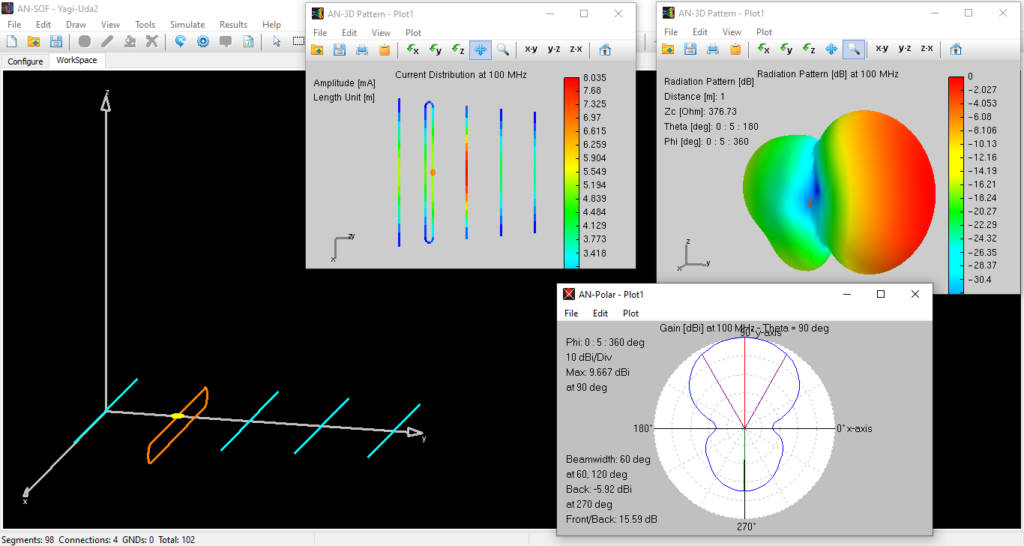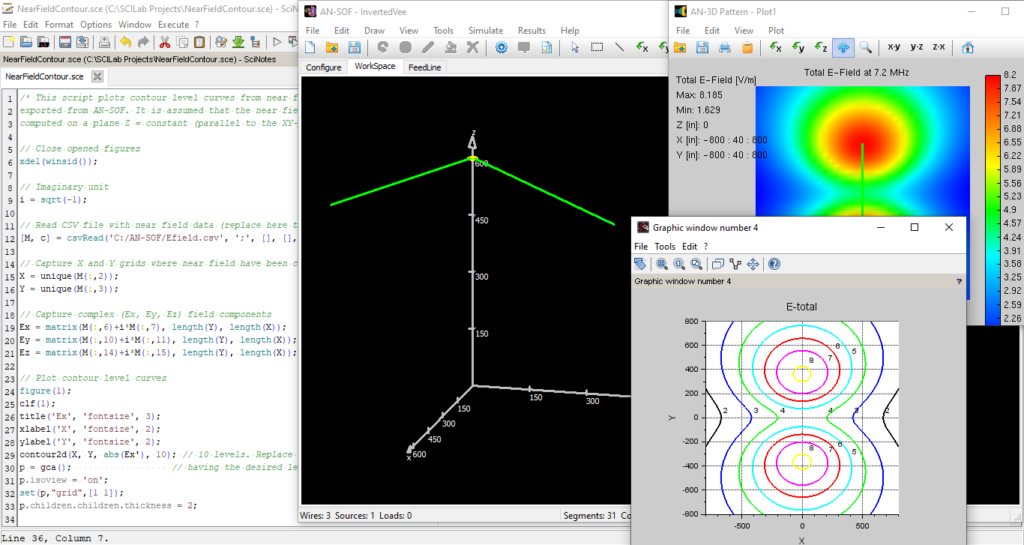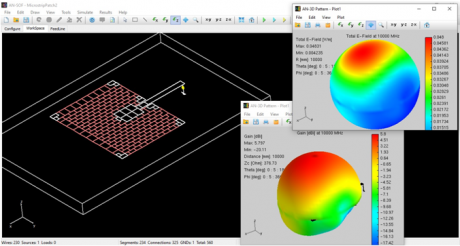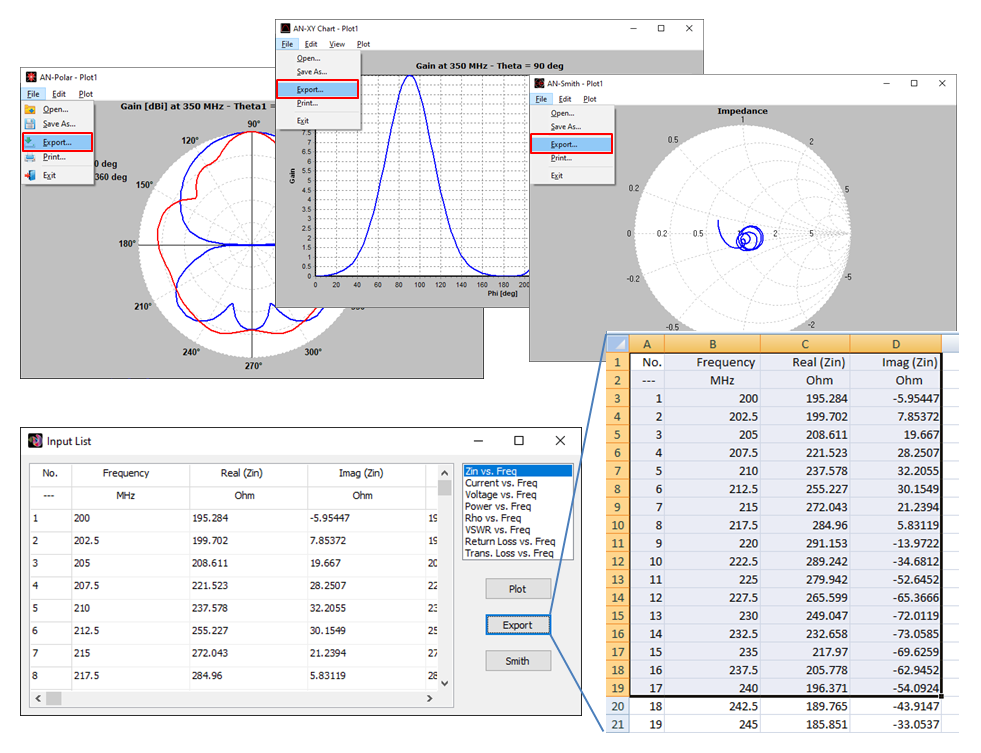
Antenna Simulation Software
AN-SOF is a simulation software for the modeling, analysis, and design of antennas. It allows users to describe antenna geometry, choose material properties, simulate far-field radiation patterns, analyze antenna parameters, and optimize designs.
AN-SOF is a must-have for anyone involved in the design and simulation of antennas. It offers a user-friendly interface, high accuracy, a growing library of antenna models, and a wide range of simulation capabilities, making it an ideal tool for both professionals and students.
Areas of Application
- Modeling and design of wire antennas.
- Antennas above a lossy ground plane.
- Broadcast antennas above radial wire ground screens.
- Single layer microstrip patch antennas.
- Radiated emissions from printed circuit boards (PCBs).
- Electromagnetic Compatibility (EMC) applications.
- Passive circuits and non-radiating networks.

AN-SOF specializes in the modeling of wire antennas, including dipoles, monopoles, yagis, log-periodic arrays, helices, spirals, loops, horns, fractals, and many other antenna types. The calculation method has also been extended to include single-layer microstrip patch antennas and printed circuit boards.
AN-SOF can be used to:
- Design better antennas.
- Predict antenna performance.
- Tune for performance.
- Account for environmental effects.
- Optimize a design using scripts.
- Get insight into the behavior of an antenna.
- Experiment multiple times before building the real model.
- Learn more about antennas.
- Share our findings with colleagues.
- Enjoy this exciting field!



Fast and Easy to Use
Data entry with AN-SOF is easy. To edit a wire, simply click on it, and an edit box will appear with the relevant dimensions. This method is easier and quicker than searching through a spreadsheet to find a wire. Additionally, sources and loads can be viewed graphically. To visualize output data, we can create a collection of plotted images to compare and save as we progress through a design. Electromagnetic fields, currents, voltages, input impedances, VSWR, consumed and radiated powers, gain, directivity, and many more parameters can be computed in a frequency sweep and plotted in 2D and 3D graphical representations.


Accurate Simulations
AN-SOF is based on an updated version of the Method of Moments (MoM), known as the Conformal Method of Moments (CMoM), with an Exact Kernel formulation. Traditional MoM codes suffer from various limitations and inaccuracies due to linear approximations to geometry and the use of the so-called “thin-wire” Kernel.
The traditional Method of Moments (MoM) has several main limitations:
- No curved wires: Straight segments yield poor results for curved antennas such as helices, loops, and spirals.
- Wire spacing limitation: Parallel wires must be separated by at least a quarter of the segment length, restricting its applicability when close parallel wires are required, such as in two-wire transmission lines.
- Issues with bent wires: Lack of convergence occurs when wires are bent at right or acute angles, leading to inaccuracies in wire grids.
- Short segment constraint: The segment length must exceed 0.001 of a wavelength, preventing the modeling of non-radiating circuits in the quasi-electrostatic regime.
- Thin wire requirement: Thick wires deviate from the thin-wire approximation, which assumes current flows only along the wire axis rather than on its surface.
- Tapered wire issues: Non-physical discontinuities arise from changes in radius between adjacent segments.
- Proximity to lossy ground plane affects horizontal wires: Monopoles above ground screens with elevated radial wires exhibit diverging input impedance and inaccurate antenna efficiency.

With the implementation of CMoM and an exact Kernel formulation, all of these limitations have been overcome, reducing the number of calculations and enhancing the accuracy of results, thereby making the simulations more efficient. This approach enables AN-SOF to simulate a wide frequency range, from extremely low frequencies (such as 60 Hz circuits) to microwave antennas.
Would you like to learn more about the CMoM? Read this article >.
